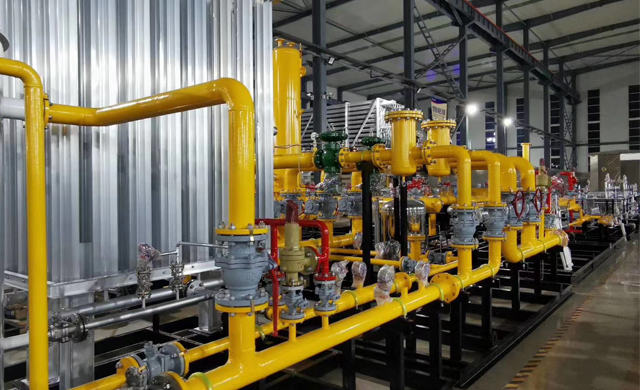
Oct . 31, 2024 23:32
Back to list
Gas Coalescer Design and Functionality in Industrial Applications
Gas Coalescers Essential Components for Efficient Gas Processing
In industrial gas processing systems, the need for efficient separation of liquids from gases is paramount. Gas coalescers play a critical role in achieving this separation. These devices are designed to enhance the removal of liquid contaminants from gas streams, ensuring that the gases entering the downstream processes are as free from impurities as possible. By understanding the functionality and importance of gas coalescers, industries can optimize their operations and improve overall efficiency.
A gas coalescer operates on the principle of coalescence, where smaller droplets of liquid combine to form larger droplets. This process facilitates the effective separation of liquids from gases. Typically, a coalescer consists of a bed of filter media that provides a surface for the droplets to collide and coalesce. As the gas passes through this media, the contaminants (usually in the form of liquid water, hydrocarbons, or other particulates) are trapped, allowing purified gas to flow through while the larger droplets fall under gravity and are collected.
One of the key advantages of using gas coalescers is their ability to improve the overall quality of the gas supply
. In many applications, such as natural gas processing, the presence of water and other liquid contaminants can lead to operational issues, including corrosion, hydrate formation, and reduced efficiency in downstream equipment. By removing these liquids, gas coalescers not only protect the integrity of processing equipment but also enhance the performance of combustion systems, thereby reducing emissions and increasing energy efficiency.gas coalescer

Furthermore, gas coalescers are versatile devices that can be integrated into various systems, including petrochemical plants, refineries, and power generation facilities. They can be designed to handle a wide range of gas compositions and flow conditions, making them suitable for a variety of industrial applications. The choice of filter media, coalescing elements, and the configuration of the coalescer itself can be tailored to meet specific process needs, contributing to improved performance.
Regular maintenance and monitoring of gas coalescers are also crucial for optimal operation. As the filter media becomes saturated with liquids and particulates, its efficiency decreases, which can lead to higher operational costs and potential downtime. Implementing a routine maintenance schedule, including the timely replacement of filter elements, can extend the life of the coalescer and maintain its performance.
In conclusion, gas coalescers are indispensable tools in the gas processing industry. They serve to enhance the quality of gas by effectively removing liquid contaminants, thereby safeguarding process equipment and improving efficiency. As industries increasingly prioritize sustainability and operational reliability, the role of gas coalescers will continue to grow, solidifying their position as a foundation for effective gas processing solutions. Understanding their functionality, maintaining them properly, and integrating them into various systems will ensure that industries can meet their goals while navigating the complexities of modern gas processing.
Latest news
-
Safety Valve Spring-Loaded Design Overpressure ProtectionNewsJul.25,2025
-
Precision Voltage Regulator AC5 Accuracy Grade PerformanceNewsJul.25,2025
-
Natural Gas Pressure Regulating Skid Industrial Pipeline ApplicationsNewsJul.25,2025
-
Natural Gas Filter Stainless Steel Mesh Element DesignNewsJul.25,2025
-
Gas Pressure Regulator Valve Direct-Acting Spring-Loaded DesignNewsJul.25,2025
-
Decompression Equipment Multi-Stage Heat Exchange System DesignNewsJul.25,2025

